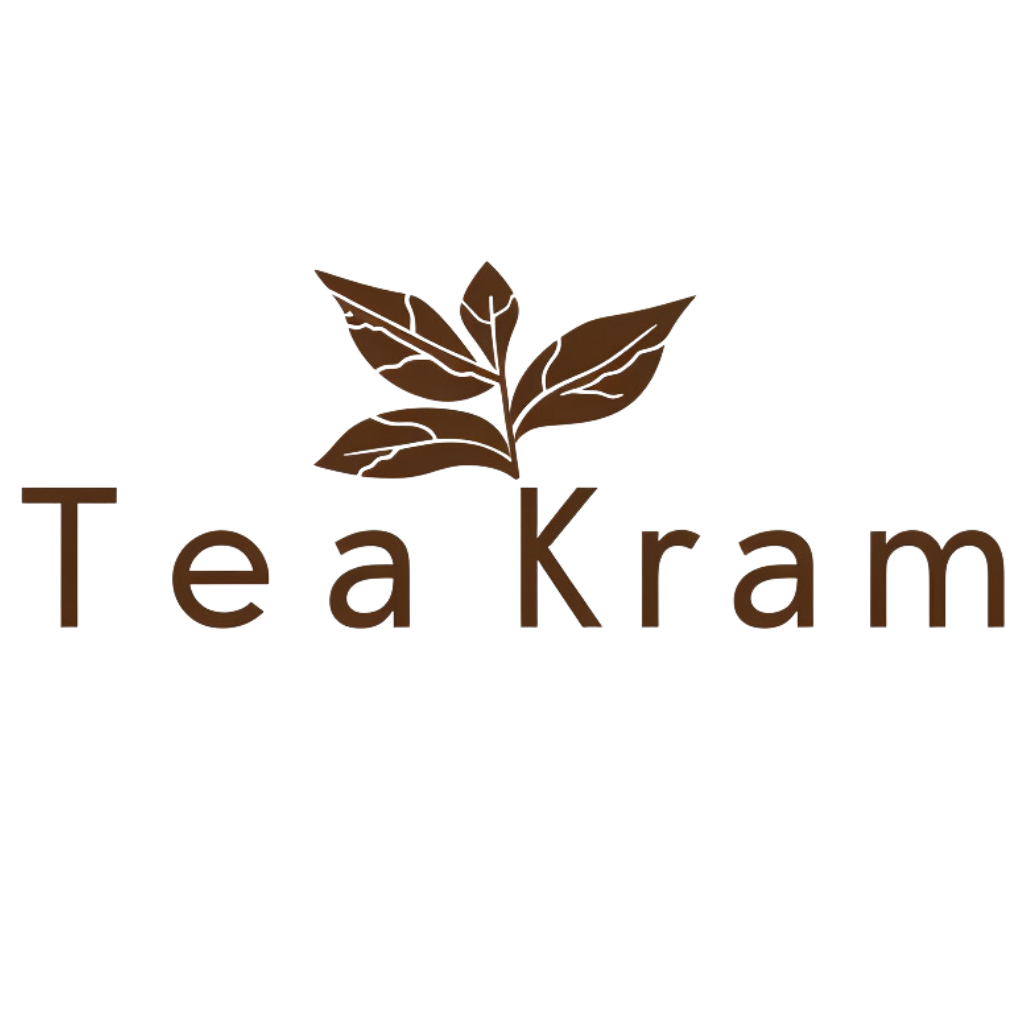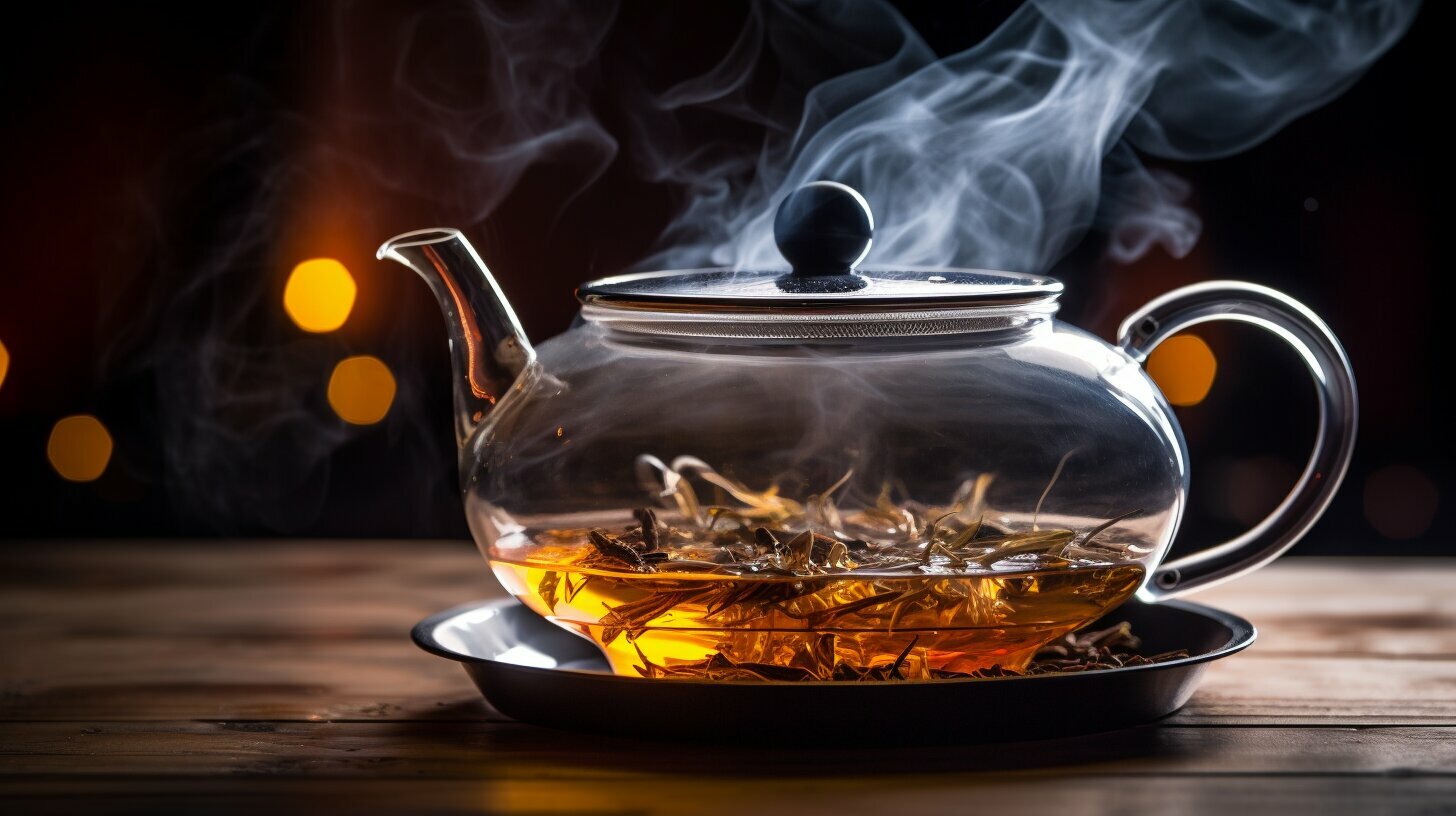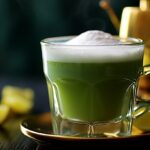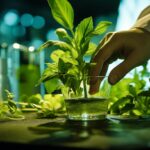Welcome, tea enthusiasts! As a professional copywriting journalist, I’m excited to guide you on how to achieve the perfect cup of tea every time. One of the essential factors in brewing the perfect tea is understanding how long to steep it. By following the recommended steeping times and techniques, you can unlock the full potential of your tea leaves and enjoy a flavorful cup every time.
Key Takeaways
- Steeping time is crucial in determining the flavor, strength, and characteristics of your tea
- Different tea varieties require varying steeping times to bring out their unique flavors and aromas
- Black teas generally require a longer steeping time compared to green teas
- Green teas are more delicate and require shorter steeping times to prevent bitterness
- Specialty teas often have unique steeping requirements, such as blooming teas or aged teas
Why is Steeping Time Important?
As a tea lover, I know that the steeping time is crucial in achieving the perfect brew. The optimal tea steeping duration can enhance your tea-drinking experience, bringing out the full flavor and aroma of your tea leaves. But why is steeping time so important?
Steeping time determines the strength, flavor, and characteristics of your tea. When tea is steeped for too long, it can result in a bitter taste. On the other hand, steeping for too short a time may lead to a weak and underwhelming cup. That’s why finding the optimal steeping time is essential for achieving the best results.
The optimal steeping time varies depending on the tea type. For example, black teas generally require a longer steeping time compared to green teas. Understanding the ideal steeping time for each tea type is crucial to avoid oversteeping or understeeping, which can affect the taste and quality of your tea.
So, what is the optimal tea steeping duration? It depends on the tea type and personal preference. In the next sections, I will guide you through the ideal steeping time for different tea varieties and share some steeping techniques to help you unlock the full flavor potential of your tea.
Understanding Different Tea Varieties
Tea comes in various types, each with its unique flavor, aroma, and characteristics. Understanding the ideal steeping time for each tea variety is vital for unlocking the full potential of your tea leaves.
Black teas: Black teas are commonly known for their robust flavor profile and have a longer steeping time compared to most teas, typically between 3-5 minutes. The longer steeping time is necessary for the leaves to release their full flavor and aroma. However, avoid oversteeping, as this can result in a bitter taste.
Green teas: Green teas are more delicate and require a shorter steeping time than black teas. Steeping for 1-3 minutes is recommended as this allows the leaves to release their flavor without becoming bitter.
Herbal teas: Herbal teas, or tisanes, often contain a combination of herbs, flowers, and fruits. Each ingredient can have different steeping requirements, but a general rule of thumb is to steep herbal teas for 5-10 minutes to extract their natural flavors.
Oolong teas: Oolong teas offer a wide range of flavors and complexities, and steeping time can vary depending on the specific type. In general, a steeping time of 3-4 minutes is recommended, but it’s best to check the packaging instructions to ensure the perfect brew.
White teas: White teas are delicate and require a gentle approach during steeping to preserve their subtle flavors and aromas. A steeping time of 1-3 minutes is recommended for white teas to prevent bitterness while bringing out their unique characteristics.
Specialty teas: Specialty teas, such as blooming teas or aged teas, often have unique steeping requirements. It’s best to check the packaging instructions or consult with a tea expert to determine the ideal steeping time for these teas.
Black Tea Steeping Techniques
Black teas can handle longer steeping times due to their robust flavor profiles. But be careful not to oversteep, as it can result in a bitter taste.
Here are some steeping techniques for black tea:
| Method | Maximum Steeping Time |
|---|---|
| Hot Steeping | 5 minutes |
| Cold Steeping | 8-12 hours |
| Microwave Steeping | 1-2 minutes |
Note: The recommended maximum steeping time for black tea is 5 minutes. Anything beyond that can cause the tea to become bitter and lose its flavor.
For a stronger flavor, use more tea leaves rather than steeping for a longer period.
How to Hot Steep Black Tea
- Boil water and let it cool for 1-2 minutes.
- Place loose tea leaves or tea bags in a strainer or infuser.
- Pour hot water over the tea and let it steep for 3-5 minutes.
- Remove the tea leaves or bags and enjoy your perfectly brewed black tea!
How to Cold Steep Black Tea
Cold steeping is a great way to make iced tea without worrying about oversteeping or bitterness.
- Place loose tea leaves or tea bags in a pitcher or jar.
- Add cold water and stir.
- Cover the pitcher and let it steep in the refrigerator for 8-12 hours.
- Strain the tea leaves or bags and enjoy your refreshing iced tea!
How to Microwave Steep Black Tea
If you’re short on time, you can use your microwave to steep black tea.
- Place loose tea leaves or tea bags in a microwave-safe cup.
- Add hot water and microwave for 1-2 minutes.
- Remove the tea leaves or bags and enjoy your hot cup of black tea!
With these steeping techniques and the recommended maximum steeping time of 5 minutes, you can enjoy a flavorful and aromatic cup of black tea every time.
Green Tea Steeping Techniques
Green teas are known for their delicate flavor and aroma, which can be easily overpowered by steeping too long. To ensure a perfect cup of green tea, follow these recommended steeping techniques:
- Begin by heating water to the appropriate temperature. Green teas are best steeped with water that has been heated to around 175°F (80°C).
- Measure out the appropriate amount of tea leaves based on the strength and flavor you prefer.
- Place the tea leaves in a tea infuser or teapot and pour the heated water over them.
- Allow the tea leaves to steep for about 1 to 2 minutes.
- After 1 to 2 minutes, remove the tea leaves from the water to prevent oversteeping and bitterness.
By following these steeping techniques, you can unlock the subtle and nuanced flavors of green tea for a delightful tea-drinking experience. Remember that the recommended tea steeping time and techniques can vary based on the type of green tea you are brewing, so be sure to consult your tea packaging or a tea steeping guide for specific instructions.
Herbal Tea Steeping Techniques
Herbal teas, also known as tisanes, offer a vast array of flavors and health benefits. However, each ingredient requires different steeping techniques to extract its natural flavors. To brew a perfect cup of herbal tea, it’s essential to know the best time to steep tea and how to steep it correctly.
The first step in steeping herbal tea is to bring fresh water to a boil. Once the water is heated, pour it over the tea leaves and let it steep for the recommended time. The steeping time for herbal teas can range from 3-15 minutes depending on the ingredients and desired flavor strength.
If you prefer a stronger flavor, you can steep the tea for a more extended period. However, be cautious not to oversteep the tea, which can result in a bitter taste. For a more delicate flavor, reduce the steeping time.
When steeping herbal teas, it’s crucial to cover the cup or pot to keep the heat and aroma inside. After the steeping time is complete, remove the tea leaves or herbal infusions to prevent overbrewing and bitterness.
The best time to steep herbal tea is before bedtime, as it can help relax your mind and promote better sleep. Chamomile, lavender, and valerian root are especially useful for their calming properties.
Overall, steeping herbal tea requires patience and careful attention to detail to ensure that you unlock its full flavor potential. Experiment with different steeping techniques and times to find your perfect cup of herbal tea.
Oolong Tea Steeping Techniques
Oolong teas offer a diverse range of flavors and complexities and require specific steeping techniques to bring out their unique characteristics.
To achieve the perfect brew, I recommend using water that’s heated to around 180°F and steeping for 3-5 minutes.
The following are some oolong tea steeping techniques to help you unlock the full potential of these teas:
- Use a gaiwan or small teapot to brew oolong tea.
- Rinse the tea leaves before steeping to remove any dust or debris.
- Steep oolong tea for a shorter duration during the first infusion, around 30 seconds to 1 minute.
- For the second infusion, increase the steeping time to 1-2 minutes.
- For consecutive infusions, increase the steeping time by 30 seconds to a minute each time.
With these oolong tea steeping techniques and the perfect tea steeping duration, you’ll be able to enjoy the rich and nuanced flavors of these unique teas.
White Tea Steeping Techniques
If you’re an avid tea drinker, you know that white tea is delicate and requires a gentle approach during steeping. It’s essential to maintain a low water temperature and avoid steeping for too long, as this can result in a weak and flavorless cup.
The recommended tea steeping time for white tea is typically between 1-3 minutes, depending on the tea’s quality and type. It’s best to use water that has been heated to around 175°F (80°C).
When steeping white tea, it’s crucial to avoid using boiling water, as it can damage the tea leaves and result in a burnt taste. Instead, allow the water to cool slightly before pouring it over the tea leaves.
One effective technique when steeping white tea is to use a strainer or infuser. This allows the water to flow freely across the tea leaves, ensuring that the flavors and aromas are evenly distributed. You can also try adding a dash of lemon juice or honey to enhance the tea’s natural sweetness.
By following these recommended steeping techniques and ensuring the optimal tea steeping time, you can savor the subtle and delicate flavors of white tea in every cup.
Steeping Tips for Specialty Teas
Specialty teas, such as blooming teas or aged teas, require special care and attention during steeping. To achieve the optimal flavor and aroma, use the recommended steeping techniques and ideal steeping time for different tea varieties within this category.
Blooming Teas
Blooming teas are a type of artisanal tea made by hand-tying tea leaves and flowers together into a ball shape. When steeped in hot water, the ball blooms, revealing a beautiful flower inside. To steep blooming teas, use freshly boiled water, and steep for around 3-4 minutes. Use a clear glass teapot or cup to enjoy the beautiful visual display of a blooming tea.
Aged Teas
Aged teas, such as pu-erh tea, are fermented teas that have undergone an aging process for several years. These teas have a unique flavor profile and require special steeping techniques. To steep aged teas, use boiling water, and steep for around 3-5 minutes. Rinse the tea leaves with hot water before the first steep to remove any impurities and to awaken the tea’s flavor.
Matcha Tea
Matcha tea is a type of Japanese green tea that is finely ground into a powder. To prepare matcha tea, use a bamboo whisk to whisk the tea powder with hot water until frothy. The ideal water temperature for matcha tea is around 175°F, and the steeping time is around 1-2 minutes.
Rooibos Tea
Rooibos tea is a caffeine-free herbal tea made from the leaves of the rooibos plant. To steep rooibos tea, use freshly boiled water and steep for around 5-7 minutes. Rooibos tea can also be enjoyed as an iced tea by pouring over ice cubes after steeping.
Chai Tea
Chai tea is a spiced tea that typically includes ingredients such as cinnamon, ginger, cardamom, and cloves. To steep chai tea, use freshly boiled water and steep for around 3-5 minutes. For a stronger flavor, add milk and sugar or honey to taste.
The Importance of Water Temperature
When it comes to steeping tea, water temperature is just as crucial as steeping time. Using the optimal water temperature can bring out the unique flavors and aromas of different tea types, ensuring a perfect cup every time.
The water temperature varies depending on the type of tea you’re steeping. For example, black teas require boiling water, while green teas require water that’s cooler than boiling.
Boiling water can scorch delicate tea leaves, resulting in a bitter taste. On the other hand, water that’s too cool can result in a weak and underwhelming taste.
As a general rule, black teas should be steeped with boiling water, while green teas should be steeped with water that’s around 175°F to 180°F. Herbal teas generally require boiling water, while white teas should be steeped with water that’s around 165°F to 180°F.
It’s important to note that water temperature can also be affected by altitude and other factors. If you’re unsure about the optimal water temperature for a specific tea, consult a tea expert or refer to the tea packaging instructions.
Does Steeping Green Tea Longer for Ice Cream Affect its Health Benefits?
Steeping green tea longer for ice cream potentially intensifies the health benefits of green tea ice cream. The extended steeping time allows for increased extraction of the tea’s antioxidants and polyphenols, which contribute to its health benefits.
Conclusion
As a tea enthusiast and professional copywriting journalist, I can confidently say that understanding how long to steep tea is essential in achieving the perfect brew. By following the recommended steeping times and techniques, you can unlock the full potential of your tea leaves and enjoy a flavorful cup every time.
Steeping time is crucial in determining the flavor, strength, and characteristics of your tea. Finding the optimal tea steeping duration can enhance your tea-drinking experience. Different tea varieties require varying steeping times to bring out their unique flavors and aromas.
Black teas often have a robust flavor profile and can withstand longer steeping times. However, it’s crucial to avoid oversteeping, as this can result in a bitter taste. Green teas, on the other hand, are more delicate and require shorter steeping times to prevent bitterness.
Herbal teas, also known as tisanes, often consist of various herbs, flowers, and fruits. Each ingredient can have different steeping requirements. White teas are delicate and require a gentle approach during steeping, preserving the subtle flavors and aromas. Oolong teas offer a wide range of flavors and complexities, and the correct steeping duration can bring out their unique characteristics.
Specialty teas, such as blooming teas or aged teas, often have unique steeping requirements. Experiment with different steeping times and techniques to find your perfect cup of tea, unlocking the full flavor potential with every brew.
Alongside steeping time, water temperature plays a vital role in achieving the perfect brew. Ensure you’re using the optimal temperature for each tea type to fully enjoy the flavors and aromas.
By understanding the optimal tea steeping duration for different tea varieties and following the recommended steeping techniques, you can elevate your tea-drinking experience. So, go ahead and experiment with different steeping times and techniques to find your perfect cup of tea.
What is the Recommended Steeping Time for Cinnamon Tea?
To make cinnamon tea delicious & healthy, it’s crucial to determine the recommended steeping time. Generally, steeping cinnamon tea for 10-15 minutes allows the flavors to fully infuse into the water, creating a rich and aromatic beverage. This duration also ensures that the beneficial compounds in cinnamon are released, providing health benefits like improved digestion and lowered inflammation.
Is the Microwave Method for Brewing Tea Quick and Effective?
Is the microwave method for brewing tea quick and effective? Many people wonder about the microwaving water for tea duration. While it may be convenient, using a microwave to heat water for tea can affect the flavor and quality. The uneven distribution of heat can lead to scalding and over-extraction, resulting in a less satisfying cup of tea. It is recommended to use a kettle or stove for better results.
As a tea enthusiast and professional copywriting journalist, I can confidently say that understanding how long to steep tea is essential in achieving the perfect brew. By following the recommended steeping times and techniques, you can unlock the full potential of your tea leaves and enjoy a flavorful cup every time.
Steeping time is crucial in determining the flavor, strength, and characteristics of your tea. Finding the optimal tea steeping duration can enhance your tea-drinking experience. Different tea varieties require varying steeping times to bring out their unique flavors and aromas.
Black teas often have a robust flavor profile and can withstand longer steeping times. However, it’s crucial to avoid oversteeping, as this can result in a bitter taste. Green teas, on the other hand, are more delicate and require shorter steeping times to prevent bitterness.
Herbal teas, also known as tisanes, often consist of various herbs, flowers, and fruits. Each ingredient can have different steeping requirements. White teas are delicate and require a gentle approach during steeping, preserving the subtle flavors and aromas. Oolong teas offer a wide range of flavors and complexities, and the correct steeping duration can bring out their unique characteristics.
Specialty teas, such as blooming teas or aged teas, often have unique steeping requirements. Experiment with different steeping times and techniques to find your perfect cup of tea, unlocking the full flavor potential with every brew.
Alongside steeping time, water temperature plays a vital role in achieving the perfect brew. Ensure you’re using the optimal temperature for each tea type to fully enjoy the flavors and aromas.
By understanding the optimal tea steeping duration for different tea varieties and following the recommended steeping techniques, you can elevate your tea-drinking experience. So, go ahead and experiment with different steeping times and techniques to find your perfect cup of tea.
FAQ
How long should I steep tea?
The ideal steeping time for tea depends on the type of tea you are brewing. Generally, black teas require 3-5 minutes of steeping, green teas need 2-3 minutes, white teas should be steeped for 1-2 minutes, and herbal teas can vary from 5-10 minutes. Remember to adjust the steeping time according to your personal taste preferences.
Why is steeping time important?
The steeping time determines the flavor and strength of your tea. Steeping for too long can result in a bitter taste, while steeping for too short a time may leave you with a weak cup of tea. Finding the right steeping time ensures that you get the optimal flavor and aroma from your tea leaves.
How can I steep black tea without it becoming bitter?
To steep black tea without it becoming bitter, use water that is just below boiling temperature (around 200°F or 93°C). Steep the tea for 3-5 minutes and remove the tea leaves promptly after the desired time to prevent oversteeping. Adjust the steeping time based on your preference for stronger or milder flavor.
What is the recommended steeping time for green tea?
Green tea is more delicate than black tea, so it requires a shorter steeping time. Steep green tea for 2-3 minutes using water that is around 175°F (79°C) to avoid bitterness. Adjust the steeping time based on your preference for a stronger or milder taste.
How can I steep herbal tea to bring out its flavors?
Herbal teas often have different steeping requirements based on the ingredients used. As a general guideline, steep herbal teas for 5-10 minutes to extract their natural flavors. Use water that is around 212°F (100°C) or boiling. Feel free to experiment with different steeping times to find your preferred taste.
What is the perfect steeping duration for oolong tea?
The perfect steeping duration for oolong tea depends on its oxidization level. Generally, steep oolong tea for 4-7 minutes using water that is around 195°F (90°C). Adjust the steeping time based on your taste preference, as longer steeping times may result in a stronger flavor.
What are the recommended steeping techniques for white tea?
To steep white tea, use water heated to around 175°F (79°C) and steep for 1-2 minutes. Avoid using boiling water to prevent scalding the delicate leaves. Be gentle when steeping white tea to preserve its subtle flavors. You can adjust the steeping time based on your desired taste intensity.
Are there specific steeping tips for specialty teas?
Yes, specialty teas like blooming teas or aged teas may have unique steeping requirements. Follow the instructions provided with the tea, as some may require specific water temperature or steeping time. Experiment and adjust the steeping technique to bring out the best flavors in these specialty teas.
How important is water temperature in steeping tea?
Water temperature is crucial in achieving the perfect brew. Different teas require specific water temperatures to extract the desired flavors. For example, black tea should be steeped with water just below boiling, while green tea requires cooler water around 175°F (79°C). Paying attention to water temperature enhances the overall tea-drinking experience.



